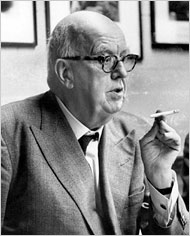In the article, "Toward a Third Culture: Being In Between" by Victoria Vesna, her perspective of the third culture is that artists and scientists, in a way, work well together, which relates to the new discoveries in science which then correlates to the artists being inspired by these aspects of the scientists. Another claim she makes is that the two cultures, talked about by CP Snow, creates an emergence of a third culture. The two cultures that CP Snow talks about is literary intellectuals and natural scientists. In this article, Vesna talks about CP Snow's novel, "Two Cultures: A Second Look" which explains the emergence of this third culture, and this new culture would close the gap between literary intellectuals and scientists. "Peace. Food. No more people than the Earth can take. That is the cause." (CP Snow). This was known to be the larger global and economic issues that remained central to Snow. With Brockman, she argues his opinion about the third culture by saying that artists are vital to help heal the gap of communication. CP Snow's perspective is very clear in that, the two cultures emerges a third culture, in which the communication gap has to be closed between literary and science. The way I see these two cultures specifically at UCLA, is the hierarchy system. In my opinion, the science buildings/department is separated from the art department. I am in the political science department as a first year, and my experience is that I do not see communication between artists and scientist, they just do not seem to have a lot in common or they just do not have time to experience opposite sides of the campus. This perspective changes my thinking in that we should have time to branch out and visit our opposite sides of the campus. My personal experience I have only been to the art sculpture garden twice this year, and that was only to walk through it to on of my classes. I never once stopped to look at the sculptures because i simply didn't have time to. This benefits me in the way that the next time I walk through the sculpture garden on the way to my class, I will stop and look at the art. I should also learn to branch out and experiment with art, because that can help me in the future.

Sources:
Williams, Christopher M. ""A Dangerous Divide The Two Cultures in the 21st Century"" The New York Academy of Sciences. Science & the City, ScienceDebate2008, and the Science Communication Consortium. Web. 02 Apr. 16. <http://www.nyas.org/Publications/Ebriefings/Detail.aspx?cid=74e271bd-4ba6-47cd-8f0a-add2ef8234cd>.
"The Third Culture." The Third Culture. Web. 02 Apr. 2016.
Vesna, Victoria. Toward a Third Culture: Being in Between. Vol. Vol.34. MIT. Leonardo. Web. 02 Apr. 16. <http://links.jstor.org/sici?sici=0024-094X(2001)34:22.0.CO;2-3>.
0ThouArtThat0. "The Implicate Order." YouTube. YouTube, 2008. Web. 03 Apr. 2016.
Snow, C.P. The Two Cultures and The Scientific Revolution: Rede Lecture. Rede Lecture. Print.
Wikipedia. Wikimedia Foundation. Web. 03 Apr. 2016.
"Architects 2Zebras." Architects 2Zebras. Web. 03 Apr. 2016.
"Faversham Stoa." -- The Two Cultures Debate. Web. 03 Apr. 2016.
No comments:
Post a Comment